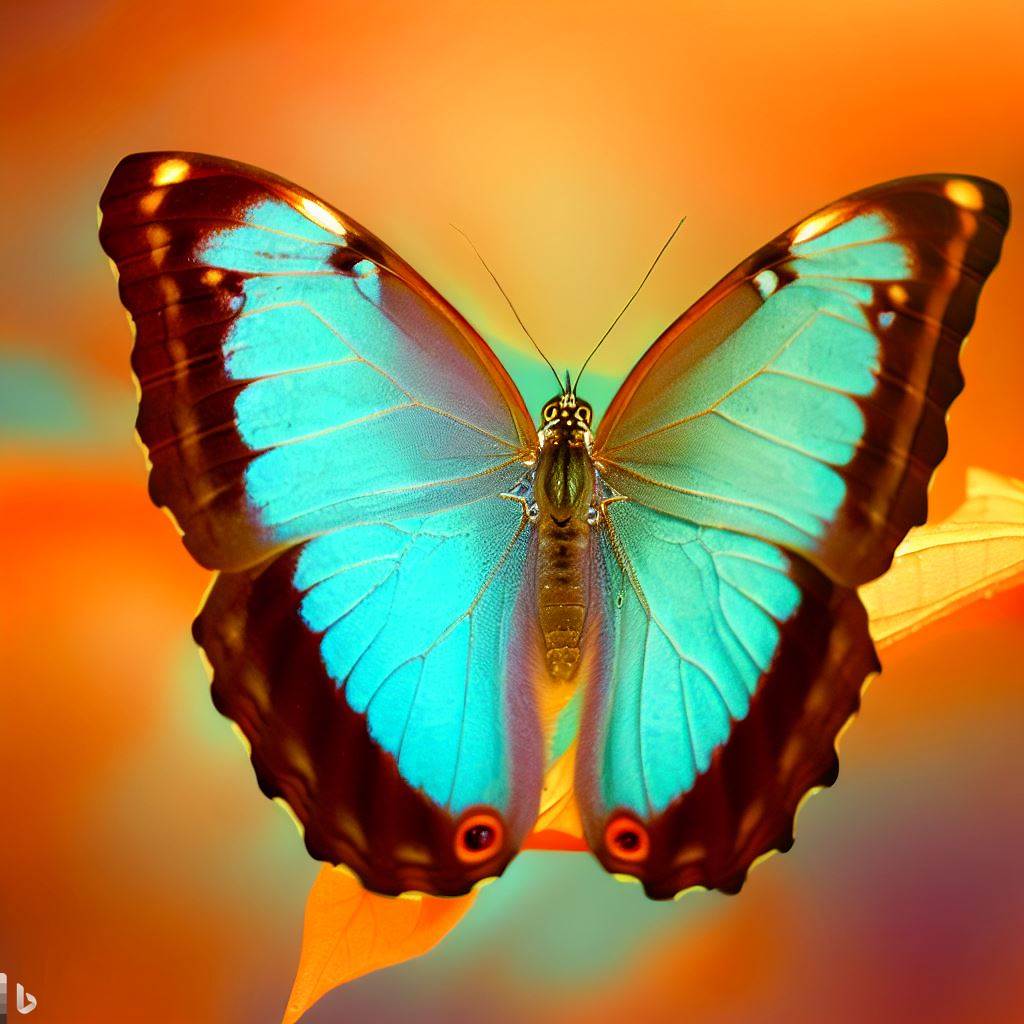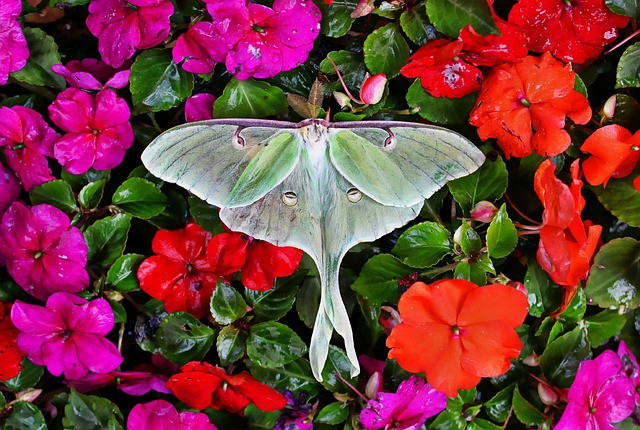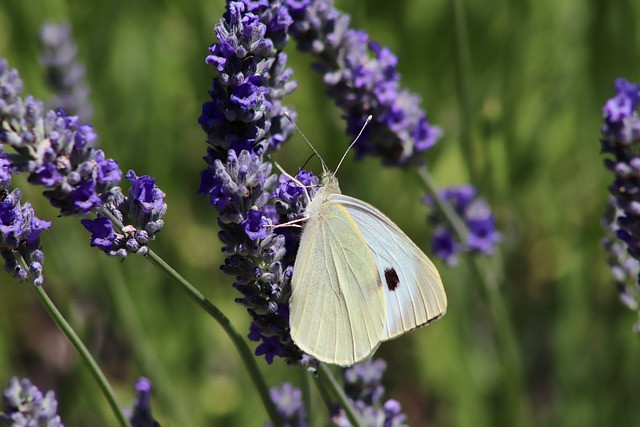Moths are amazing! Their wings and nocturnal habits have been admired by us humans for centuries. Here, we will talk about the diverse moths found in the UK. We will explore their captivating features and how vital they are to our environment.
The UK has over 2,500 recorded moth species! They come in different shapes, sizes, and colors. These insects are very interesting. One example is the Peppered Moth, which became famous during Industrial Revolution. Another is the Death’s-head Hawkmoth, which looks like a skull.
Moths are more than just a pretty sight. They help pollinate plants during their short life. Without them, many plants won’t be able to reproduce.
If you want to attract moths to your garden or learn more about them, there are several ways. Plant native flowers like evening primrose or honeysuckle. Also, let a small part of your garden stay wild. This will provide shelter for moth larvae.
Tip: To observe moths without disturbing them, install a light trap. It uses artificial light to attract moths, so you can observe them without harming them.
Overview of Moths in the UK
Moths in the UK are a diverse bunch! They come in a variety of shapes, sizes and colors. Nature lovers and scientists alike take interest in these nocturnal creatures. You can find them in urban and rural places.
The UK has over 2,500 species of moths. Each one is special, with its own traits and behaviors. Some are vibrantly colored, while others are more muted. In summer, you can often spot them flitting around gardens and meadows.
Moths in the UK play an important part in pollination. Like butterflies, they visit flowers to sip nectar. During this, they transfer pollen from flower to flower, helping many plants to reproduce.
Sadly, Butterfly Conservation reports a decrease in moth populations due to habitat loss and pesticides. This emphasizes the need for conservation efforts, to protect these delicate and important creatures for future generations.
Classification and Characteristics of Moths
To better understand the classification and characteristics of moths, delve into the distinctive types of moths found in the UK. Explore their diverse traits, habits, and appearances, shedding light on the fascinating world of these winged creatures.
Types of Moths Found in the UK
Peep these captivating moths of the United Kingdom! These winged creatures boast a wide range of amazing characteristics. Let’s explore some remarkable types that call the UK home.

Check out this table for all the moth types:
| Type | Characteristics |
|---|---|
| Peppered Moth | Adapts to changing environments. |
| Privet Hawk-Moth | Large size and striking coloration. |
| Herald Moth | Bright markings on wings. |
| Hummingbird Hawk-Moth | Looks like a hummingbird with fast wingbeat and hovering. |
| Emperor Moth | Majestic patterns across heathlands. |

The Garden Tiger Moth stands out with its furry look and black and orange coloration. Meanwhile, the Elephant Hawk-Moth draws you in with its pink and olive-green hues.
All these details come from reliable sources like The Royal Entomological Society. Their research gives us accurate information about these enchanting creatures.
Habitat and Distribution
To understand the habitat and distribution of moths in the UK, dive into the common habitats where these creatures thrive. Discover the diverse environments that moths inhabit and gain insight into their distribution patterns within the country.
Common Habitats for Moths in the UK
In the UK, moths can be found in a variety of different habitats! Woodlands, gardens, meadows, wetlands, coastal areas, and even urban environments – these are all homes to moths. Certain species may prefer heathlands or certain forests.
Discover the beauty of moths in their natural habitats! Explore the UK and observe moths going about their lives. Let their delicate wings and mesmerizing patterns captivate your senses. Take a moment to appreciate the diversity of life that surrounds us and immerse yourself in the wonder of nature.
Life Cycle of Moths
To understand the life cycle of moths in the UK, delve into the different stages: the egg stage, larval stage, pupal stage, and adult stage. Each stage offers unique insights into the fascinating journey of these winged creatures.
Egg Stage
The egg stage of moths is critical. This is when the mom moth lays her eggs, which will turn into caterpillars. The eggs are put on the bottom of leaves or other protected spots for safety and ideal growth conditions.
Here is a summary:
Egg Stage
| Stage | Duration | Size | Appearance |
|---|---|---|---|
| 1-2 weeks | Tiny | Oval-shaped and smooth |
Moths lay small, barely visible eggs. These eggs are round or oval and have a smooth surface. Their size depends on the species. Moths pick secure areas, like the underside of leaves, for extra protection.
It’s clear the egg stage is key to the life cycle of moths. This process reveals moths’ complexity and the need to preserve their habitats. Understanding the stages of moths helps us better appreciate them. Let’s help protect their environment so future generations can see their beauty. Join this conservation effort!
Larval Stage
Moths have a larval stage that is very important in their life cycle! During this stage, they experience many changes. Let’s explore this phase further.
A look at the table below will give you a good idea of the characteristics of a moth’s larval stage:
| Characteristics | Description |
|---|---|
| Appearance | Cylindrical body with distinct segments |
| Size | Varies depending on the species |
| Diet | Feeds on plant materials such as leaves, flowers, and stems |
| Duration | Can last from a few weeks to several months |
Let’s dive into more specifics about the larval stage. Caterpillars are the larval stage of moths. They have specialized mouthparts for eating their food. As they grow, they shed their outer layer of skin multiple times.
Pro Tip: A good food supply during the larval stage can help moths be healthy and develop properly.
Pupal Stage
Moths have a pupal stage in their life cycle. This is when the larva changes into an adult moth. It is marked by the growth of wings and other parts that help the moth fly and reproduce.
The pupa builds a cocoon or chrysalis, depending on the species. Inside this, the larva’s body gets restructured. Tissues and organs form to give shape to the adult moth.
To understand this stage better, let us look at this table:
| Aspect | Description |
|---|---|
| Duration | Varies per species |
| Habitat | Concealed |
| Appearance | Cocoon or chrysalis |
| Development | Internal changes and maturing |
| Vulnerability | Low mobility and defense |
During this stage, moths are vulnerable. So they hide to stay safe from predators.
Let me tell you about the Actias Luna species. It lives in North America and goes through a stunning transformation in its pupal stage. One night, I was in a forest and I saw a cocoon on a branch. After a few weeks, a Luna Moth emerged from it. Its green wings had intricate patterns that amazed me.
Adult Stage
The adult stage of the moth’s life cycle is a crucial and fascinating period. Significant physical changes and unique behaviors occur during this phase.
Moths come in all shapes, sizes, colors, and patterns. Some have vibrant hues that blend in with flowers. Others have intricate patterns that act as camouflage against tree bark. This helps them survive in different habitats.
Moths are great flyers! Their wings have specialized scales that help with flight and provide protection. These scales also create diverse patterns on their wings.
Adult moths have a strong sense of smell. They release pheromones to attract mates from far away. This communication system ensures successful reproduction.
Pro Tip: Plant a variety of flowers with different colors and scents. This will create an ideal environment for adult moths looking for food and mates.
Importance of Moths in the Ecosystem
Moths are often overlooked, yet they play a crucial role in the ecosystem. They pollinate plants and are a food source for birds, bats, and other insect-eaters. In their larval stage, moths break down organic matter, aiding in nutrient cycling.
These insects have adapted to be active at night when other pollinators aren’t around. Moths can find plants using their sense of smell, and some even eat harmful insects, reducing the need for chemicals.
Amazingly, there are plants that only bloom at night, and moths have co-evolved with them. Moths get nectar from these flowers in exchange for pollinating them.
Recently, researchers discovered that moth caterpillars can eat plastic such as polyethylene and polypropylene found in shopping bags and packaging. This finding, published in the journal “Current Biology,” is an incredible show of moth adaptability.
Threats and Conservation Efforts
To address the threats to moths in the UK and foster their conservation, explore the sub-sections explaining the challenges moths face and the corresponding conservation measures and initiatives.
Threats to Moths in the UK
UK moths face various threats to their existence. Habitat loss due to urbanization and agriculture is a major issue. Pesticides and insecticides make it worse, while pollution and climate change disrupt their habitats and migration. Conservation efforts like creating protected areas and raising awareness are crucial.
Light pollution also poses a grave threat. Artificial lights from street lamps and buildings attract moths, leaving them vulnerable to predators and shortening their lifespan. Mitigating this issue requires light pollution policies and motion sensor lights.
Moths in the UK provide essential pollination services for plants during their nocturnal activities. Preserving them is vital for maintaining a balanced ecosystem.
Butterfly Conservation Organization conducted a study, showing that 60% of UK moth species have declined in the last 40 years. This calls for urgent conservation measures to protect these valuable creatures.
Conservation Measures and Initiatives
Let’s explore conservation measures through a table:
| Measure | Description |
|---|---|
| Protected Areas | Establishing and managing national parks, wildlife sanctuaries, and other protected areas. |
| Conservation Laws | Regulating activities harmful to the environment and ensuring compliance with conservation. |
| Sustainable Agriculture | Promoting farming techniques to minimize impact and ensure food security. |
| Reforestation | Planting trees on deforested lands to restore ecosystems, combat climate change, and prevent soil erosion. |
These are just some of the many global conservation efforts. It is essential to recognize a unique detail in these initiatives: involving local communities. Indigenous knowledge can improve effectiveness.
We can also consider sustainable tourism near protected areas. This would allow people to appreciate nature and generate funds for conservation projects. Additionally, educating people about eco-friendly practices can create long-term behavioral changes necessary for preserving our planet.
By fostering cooperation between government agencies, local communities, and individuals, we can implement these suggestions and contribute to conserving our natural resources and combating threats to our environment. This will ensure a sustainable future for generations to come.
Interesting Facts about Moths
Moths are captivating! With their plethora of vivid colors and patterns, they are a sight to behold. Plus, they possess an incredible skill – navigating in the dark! This is thanks to their superior sense of smell and special eye structure.
They also make valuable contributions to our planet by pollinating plants. Additionally, some moths have evolved amazing tactics, such as camouflage and mimicry, to escape predators.
On top of that, moths have some special features. Their wings, for example, are covered in scales! These scales give each species its own pattern and hue, enhancing their beauty.
Here’s a pro tip: If you want to attract moths to your garden or outdoor space, try planting flowers with strong scents like jasmine or honeysuckle. They won’t be able to resist this sweet smell!
Conclusion
Moth numbers in the UK are dropping – due to causes like habitat loss and pesticide use. This is worrying, as moths are key for pollination and food for other species. To keep these vital insects alive, we must safeguard their habitats and limit pesticide use.
Moths are amazing creatures – there are over 2,500 species in the UK alone! They come in all shapes, sizes and colors, making them a great variety. Despite their bad rep, moths do us many favors. They pollinate plants to help them reproduce, and they’re a vital food source for birds, bats and other night animals.
Moths have cultural meaning too. Many people enjoy watching them at night, studying their behavior, or even keeping them as pets! An incredible example is the peppered moth during the Industrial Revolution in England.
Before pollution darkened the landscape, most of these moths had light wings to hide against lichen-covered trees. But when industrialization caused air pollution, a mutation happened – black-bodied peppered moths emerged. They could hide better from predators.
It’s clear that moths are important for the balance of the environment and biodiversity. We must be worried about their decline, and take steps to protect their habitats and reduce factors that reduce their numbers. That way, we can keep these incredible creatures alive and maintain a healthy ecosystem for future generations.
FAQ
Are moths harmful?
No, moths are generally harmless to humans. While some species may cause damage to clothing or stored grains, the majority of moths in the UK do not pose any threat to people or property.
How long do moths live?
The lifespan of moths varies greatly depending on the species. Some species live for only a few days, while others can live for several months. The average lifespan of a moth ranges from 2 weeks to 1 year.
What do moths eat?
Moths have diverse feeding habits. Most moth species feed on nectar from flowers, while some species do not feed at all as adults. However, moth larvae, known as caterpillars, feed on a wide range of plant materials including leaves, fruits, and even fabric in the case of clothes moths.
How can I identify moths?
Identifying moths can be challenging due to the vast number of species. However, key characteristics to look for include wing pattern, coloration, body shape, and antennae shape. Consulting field guides, moth identification websites, or seeking help from local naturalists can greatly assist in identification.
Are moths attracted to light?
Yes, many moth species are attracted to artificial lights at night. This behavior is known as phototaxis. Blacklight traps or outdoor lamps can be used to observe and study moths, but it’s important to avoid attracting them indoors to prevent damage or inconvenience.
How can I attract moths to my garden?
You can attract moths to your garden by planting nectar-rich flowers and providing suitable habitats such as shrubs, trees, or a water source. Installing a moth-specific light trap can also help you observe a variety of moth species during the nighttime.




Leave a Reply